A Trip To Candytopia
According to the team behind Candytopia, a popular pop-up experience that recently made its debut in Atlanta, this wild and whimsical exhibit can be compared to the “glittering love child” of an “eccentric chocolatier and a daredevil pop star that had a whirlwind romance, and got married while skydiving”. With that said, the teammates of NELSON Atlanta had to check it out and couldn’t pass up the opportunity to see what the magical museum was all about.
Our studio took a break from reality to visit this sugar-filled art exhibit and upon arrival we were impressed. Large scale pop-up experiences are a popular trend nowadays and despite the somewhat pricey fee to get in, we found it well worth the visit. The museum consists of twelve rooms full of over-the-top décor, Instagrammable moments, and hundreds of thousands of pieces of candy. From a life-size sculpture of Ray Charles playing Georgia On My Mind, to flying pigs and confetti canons each room had its own unique experience and we really enjoyed the bits and pieces of localization they added to celebrate the culture of Atlanta.
Things To Know Before You Go:
- Bring a large purse or go with someone who has one because you get candy in every room.
- You will be covered in confetti from head-to-toe and will continue to find it for days.
- You will need a shower after going in the marshmallow pit, but don’t let that stop you…because let’s be honest, you haven’t really lived until you’ve pulled your co-worker out of four feet of foam marshmallows.
If Candytopia is coming to a town near you, don’t miss out!

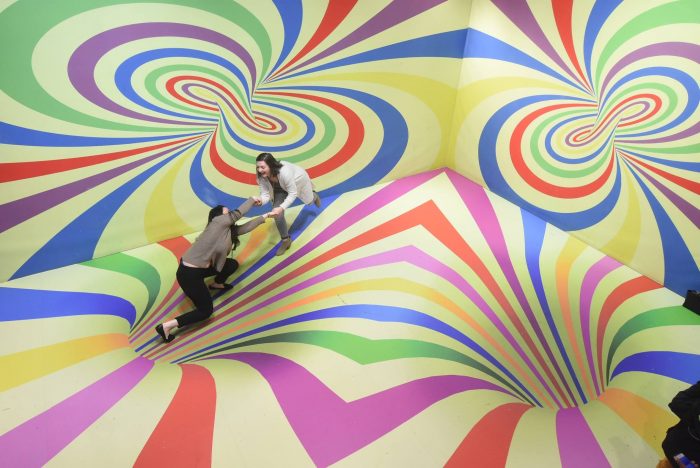
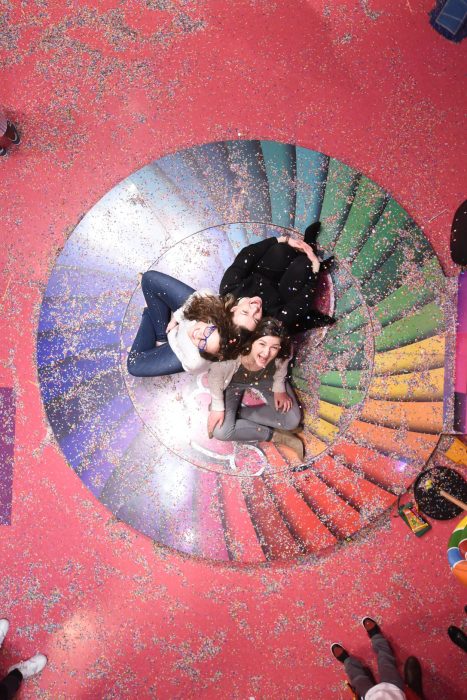
What If Every Game Day was Super Bowl Sunday?
For fans, this Super Bowl weekend was an opportunity to eat, drink, and have fun together. For professional sports teams, it was an opportunity to possibly glimpse the future of their business.
To be fair, the Super Bowl is America’s preeminent sporting event, and there was probably more than one trend-setting aspect to the event. But this year’s Super Bowl–and every Super Bowl, really–neatly frames the opportunity teams have if they invest in creating experiences at their home games that go beyond the action.
According to the National Retail Federation, 220.5 million adults planned to watch this year’s game between the 49ers and the Chiefs. Those adults were expected to spend an average of $86.04 per person, or $17.3 billion in total. But, and this will surprise no one, only 44% of those adults said that the game itself was the most important thing to them this weekend.
That means that half of those who planned to watch–nearly 100 million people–took a few hours out of their Sunday and nearly $100 dollars out of their pocket for something they might not have cared that much about.
Now, of course, we know that’s not really true: They cared about the Super Bowl.
But it isn’t the game they care about. It’s the experience of the game.
It’s the parties. It’s the drinks and food. It’s the commercials and the halftime show. It’s the connection with friends, family, and neighbors who are all doing the same thing at the same time. It’s the totality of the event, with the action on the field being a complement.
Don’t believe it? Consider one more stat: Of those who were planning on spending money, only 13% planned to spend money on team apparel. The rest of it was going to food and beverages, decorations, furniture, and TVs.
As they say, it’s only a game.
So, theoretically, teams could significantly increase their audience if they made their home games more like the Super Bowl. But every game can’t be like the Super Bowl.
Or could it?
Many teams are taking steps to bring core elements of experience to each and every home game. Mixed-use districts like The Battery, a NELSON-designed development adjacent to Truist Park, home of the Atlanta Braves, created an opportunity for Braves fans (and anyone else) to gather, eat, shop, and more before and after each game. On a good night, the Battery might resemble the scenes in Las Vegas this past weekend.
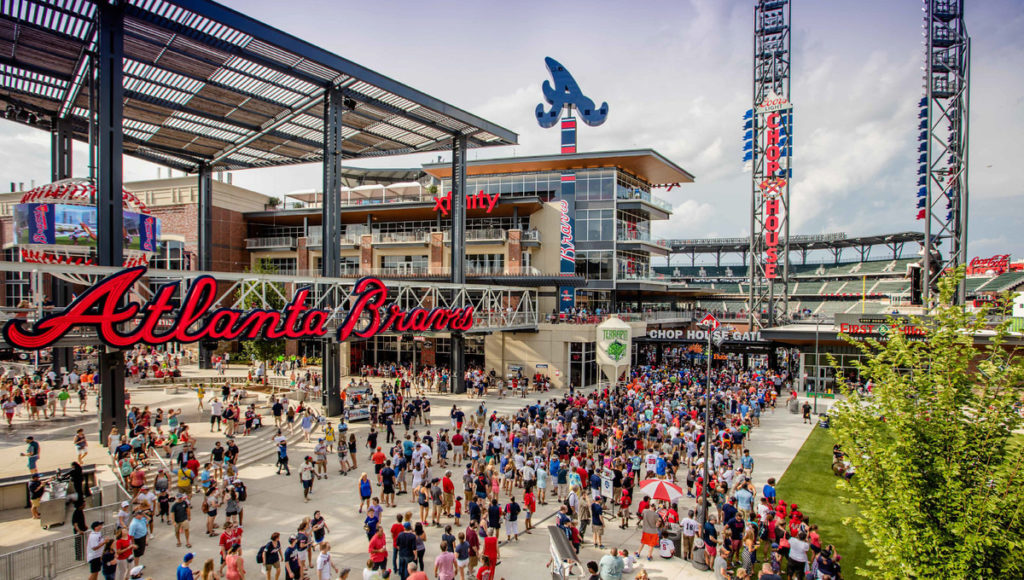
The Battery in Atlanta draws 10 million visitors annually, and only three million are there to watch a ballgame.
And this is where it really gets interesting. There doesn’t even have to be a game for this to take place. Like any great neighborhood, the Battery is open daily, year round, meaning those same fans are there even when the Braves aren’t. Consider that the Battery had 10 million visitors last year, and only three million of those were there to see a baseball game.
Not only is investing in experience an interesting opportunity for teams, it might be an imperative. A 2023 report by Deloitte states that while Gen Z and Millennials are avid sports fans, they do not consume sports content the way that Generation X and Boomers do.
Unsurprisingly, these differences are related to technology. Younger fans are less likely to watch a game live than older fans; they’ll catch it on YouTube later. And they are also more likely to be doing something else — checking stats, looking for reactions on social media, or watching another game on a separate device — all while the game they are watching is on.
Put another way, they’d rather watch fans blow each other up on Twitter than high five a stranger after their defense blows up a slow-developing screen pass..
For many, the thrill of sports will never diminish. They want to see the Hail Mary, the walk off, or the buzzer beater, and the artistry of top athletes lives forever in their minds. For others, they love the energy of the game, but it’s the way that energy radiates out from the event that really excites them.
Smart teams will find a way to capture both audiences.
Ice Miller
Pandemic Messaging: Finding the Right Tone of Voice During COVID-19
Generally, when we work with clients on developing their brand purpose and brand personality, we talk about creating a purpose that resonates with the core of who they are and what they do. We tell them it should be something that lasts for the lifetime of the brand, not something that should change based on shifts in the market. However, during unprecedented times such as these, brands will need to acknowledge how the crisis affects them and react in a way that supports their loyal consumer base. As humans, we elevate different parts of our personality to match the situations we’re in. If brands are a reflection of ourselves shouldn’t they do the same?
Here, we explore a few brands that have adapted successfully, and share a few tips for other brands to follow:
- Be Human – act with sensitivity and compassion, like a real human, not just a brand
- Lead Purposefully – authentically and consistently lean into your brand values
- Act with Intention – back up your adapted tone of voice with actions
Skyscanner
Skyscanner, a travel company based in the United Kingdom, transformed their normally humorous tone of voice (TOV) to be more compassionate and sensitive. They leaned into a sense of positivity even though they are significantly impacted by non-essential travel disappearing.
Instead of lamenting the fact that travel isn’t a possibility at the moment, Skyscanner leaned into their brand ethos of being “the travel company who puts you first” and posted fun ways to engage with consumers during their time at home. Their efforts include creating curated playlists on Spotify with travel-inspired songs, a blog that shares travel guide videos of places around the world, and travel-themed “play packs” for kids to do indoors, They even crowdsourced content from their employees.
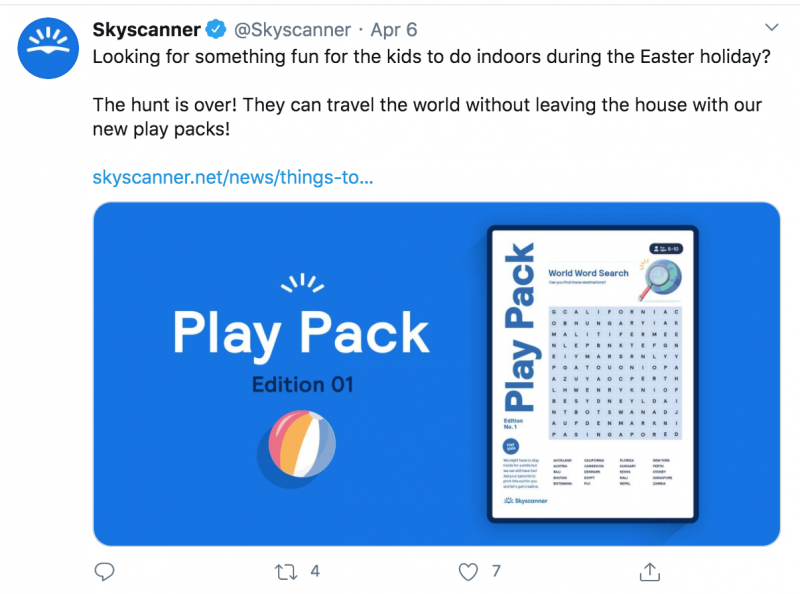
YouTube
YouTube has long touted their platform as a “community.” During the COVID-19 pandemic, they are taking that a step further by encouraging their community to“Stay Home with Me.” They are sharing channels and videos from creators who are developing content ranging from crafts to exercise.
One of their other brand values revolves round the “freedom of information.” They previously used this to highlight how-to videos and news channels, but recently partnered with Khan Academy to help students “Learn @ Home.”
YouTube is staying committed to their efforts by changing all their social media accounts to say, “YouTube at …” and regularly posting new videos every few days. They are taking this time to focus more on the content that creates community, provides support, and enhances education rather than elevating some of the more lighthearted entertainment content previously hitting the trending pages.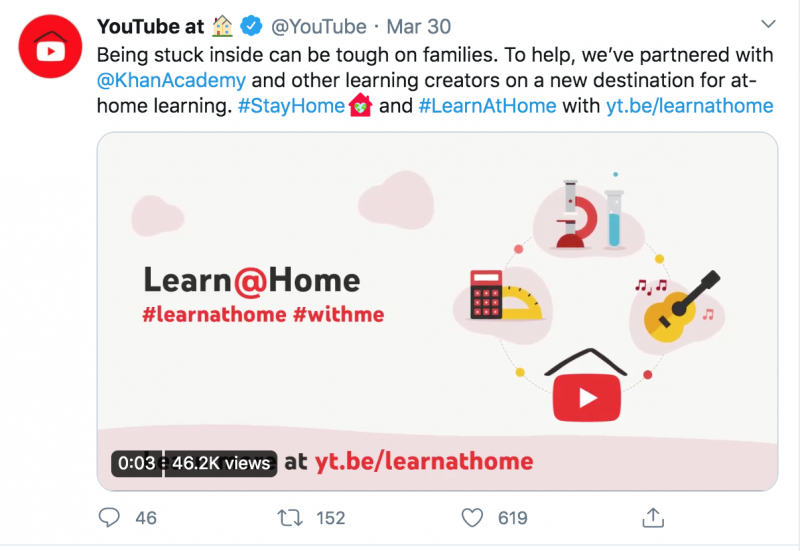
Dunkin’
Dunkin’, known for their joyful and pun-filled TOV, pivoted to honoring all essential workers and making sure employees and consumers are staying safe.
Dunkin’ understands times are tough, so they are shining a light of positivity by donating from their Dunkin’ Joy in childhood foundation to organizations working on the frontlines during this crisis. They are donating coffee and donuts to hospitals, encouraging franchisees to support their communities, and posting the precautions they are taking to keep employees safe.
Instead of only offering discounts and deals, they are showing appreciation for people who are working right during this crisis. A simple cup of coffee and a donut could be just what a first responder or cashier needs right now.
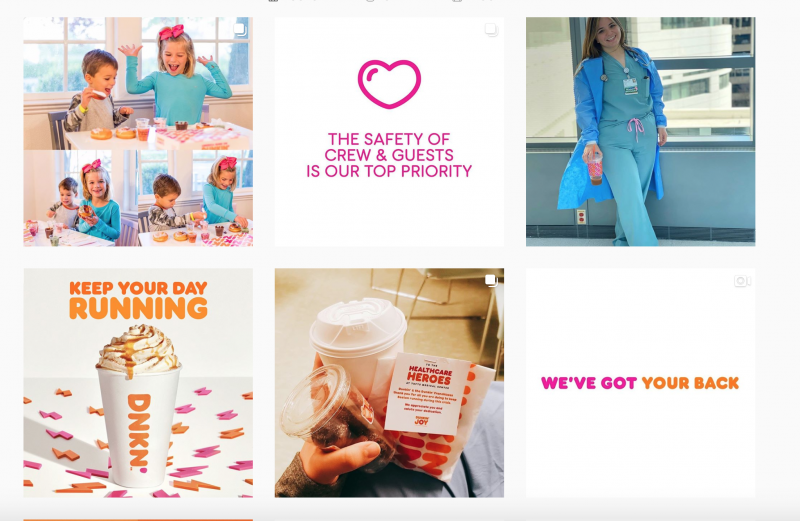
Where do we go from here?
Brands will continue to adjust their response in an effort to react in a way that will draw consumer loyalty. They will also continue to measure consumers’ attitudes during this time. Right now, people are trying to pass the time, so brands will continue getting creative to keep everyone occupied and maintain share of mind.
Here are a few brands staying creative during COVID-19:
- Madison Reed’s videos on how to dye your hair at home.
- Headspace’s live Instagram videos called #TakeTen featuring the CEO and a special guest doing guided meditations.
- P&G sponsored #DistanceDance TikTok videos to encourage younger people to stay at home. For the first three million videos posted, P&G is donating to Feeding America and Matthew 25.
Takeaways for Brands
Brands need to be strategic about what messages they want to communicate during this time because what they say and do now will impact how people will remember them when this crisis is over. Brands that make the right decisions could emerge stronger and have a more dedicated customer base, those that don’t might struggle “winning” back consumers.
As brands evaluate their next steps, there are a few questions they can ask to help find the right path forward:
- Is your current voice enhancing your brand values and brand purpose?
- Does your messaging and tone of voice reflect what your consumers need?
- Are you providing levity where it’s needed and support/empathy when called for?
- Will this message encourage safe reactions or endanger lives?
- Have your actions supported your words?
One Concourse Parkway
Business of Home: West Elm’s new president, Universal and Brown Jordan grow leadership teams and more
Nelson Worldwide appointed Brad Ewing as regional practice leader of their Civic & Justice practice. Ewing brings experience in architecture, project management, building design and space planning, most recently serving as a senior project manager and architect at Orlando-based firm Dewberry. In his new role, Ewing will provide oversight and collaborate with national and regional leadership to create opportunities for Nelson’s growth. Katie Pass-Brinker also joined Nelson Worldwide as design leader of hospitality. With over 15 years of experience in hospitality, she led and managed design teams at firms like Philadelphia-based Daroff Design.
Read more with Business of Home here.
Johnnie Walker Madrid: The Ultimate Flagship Experience
Located in the heart of Madrid, Spain, Johnnie Walker–an iconic scotch whiskey brand–has opened a flagship destination perfect for whiskey experts, whiskey beginners or those who are just looking to enjoy a beverage or learn something new. The immersive shop offers visitors the chance to deep-dive into the flavors and stories of the brand.
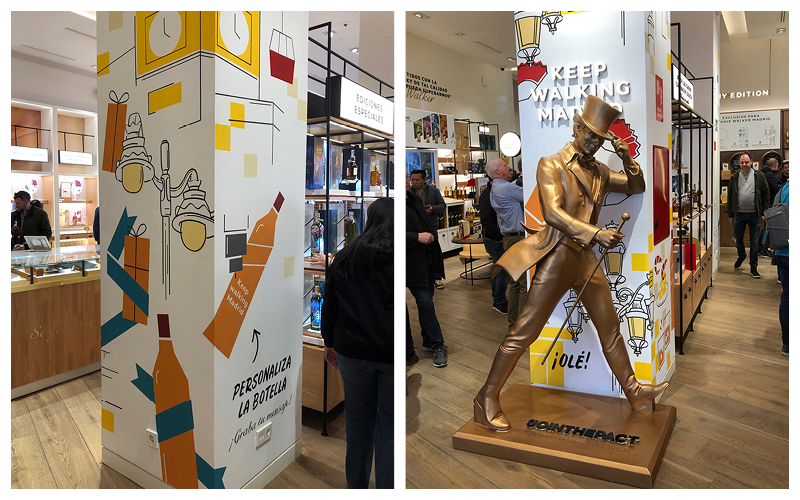
Features inside the store include a hosting area where guests can explore the craft of cocktail making or take a seat at a tasting table where they can deep dive into the flavors of Johnnie Walker.
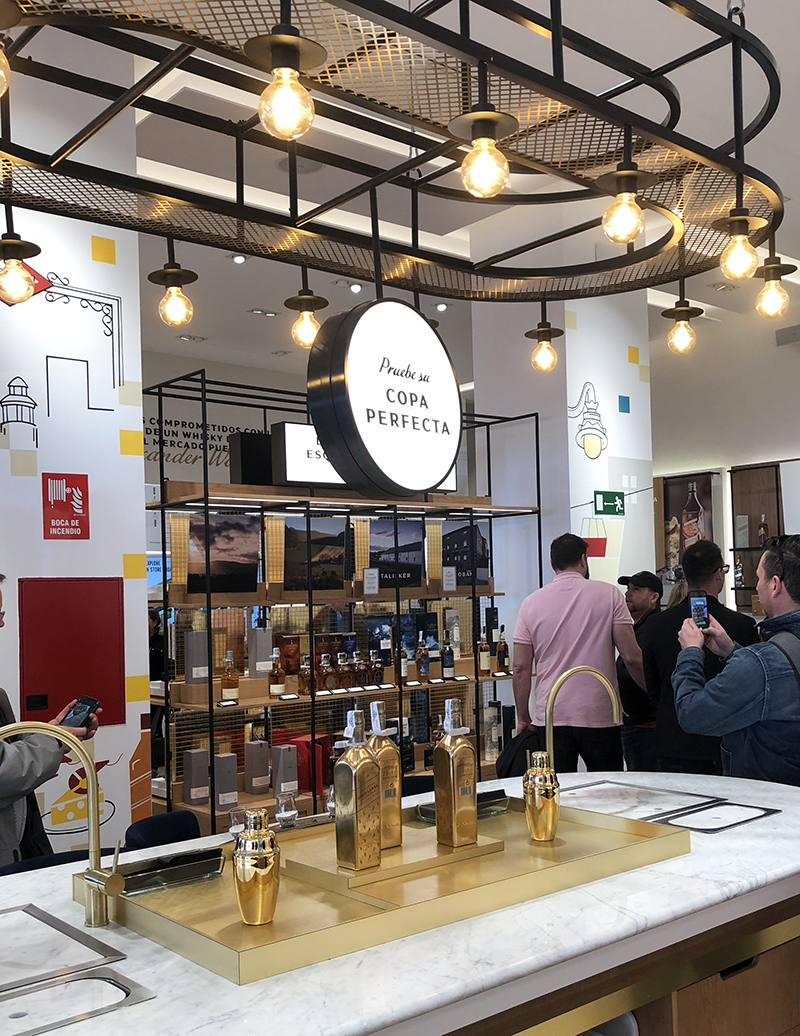
A unique personalization station, where visitors can discover, choose, and personalize an individual bottle of whiskey, is located along one wall accompanied by unique gifts and one-of-a-kind bottle labels. This not only allows guests to get closer to the product but allows them to make a memorable experience they will forever associate with the brand.

In addition to the interactive elements within the space, the Johnnie Walker flagship also acts as a stage for the brand. Displaying the brand’s extensive portfolio of whiskeys, the store is home to exclusive products, curated collaborations, and limited edition collections. Store associates are well educated in the brand’s rich heritage offering an educational element to the store’s experience, providing in-depth knowledge of whiskey flavor profiles.
Adding a digital element to space, an interactive screen allows customers to tap into a virtual map that explains the history of each whiskey and which region it came from.
Curious to see what else we explored while at EuroShop 2020? Click here for key takeaways and more coverage!
Building Design + Construction: Oracle Industry Lab enables development of solutions for multiple industries
The Oracle Industry Lab in Chicago, which provides customers in multiple industries the opportunity to test new technologies, recently opened. It is the first such facility for the IT giant that plans to add labs in England and Australia later this year. Read more with Building Design + Construction here.
Archello: Sweetwater
Founded in 1979, Sweetwater has gone above and beyond to provide musicians with the best selection, service, and support needed to create music. Sweetwater wanted to fine-tune its approach to meet today’s needs of consumers. For its newest location, the brand turned to global architecture, design, and strategy firm NELSON Worldwide to create a new retail concept better suited for Sweetwater customers who want to peruse, experience, and purchase in a setting that encourages product engagement. The Sweetwater concept store gives consumers a first-class retail experience with a unique showroom-like design and tailored areas to test equipment. Read the full article here.
Archinect: Sweetwater
Founded in 1979, Sweetwater has gone above and beyond to provide musicians with the best selection, service, and support needed to create music. Sweetwater wanted to fine-tune its approach to meet today’s needs of consumers. For its newest location, the brand turned to global architecture, design, and strategy firm NELSON Worldwide to create a new retail concept better suited for Sweetwater customers who want to peruse, experience, and purchase in a setting that encourages product engagement. The Sweetwater concept store gives consumers a first-class retail experience with a unique showroom-like design and tailored areas to test equipment. Read the full article here.